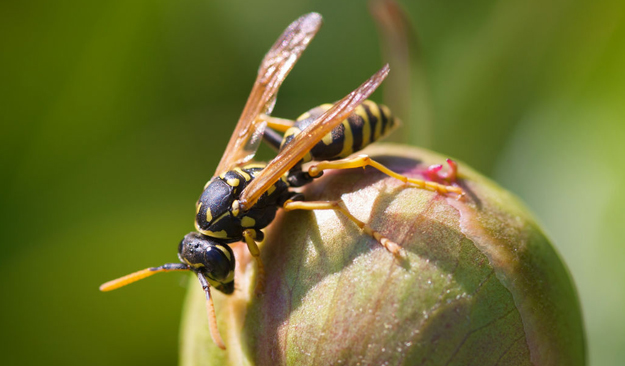Planning Ahead for Next Summer’s Yellowjackets
By Chris Williams on January 16, 2014.

Question
I’m already tired of winter and thinking ahead to Spring and gardening. Last year we seemed to have a lot of yellowjackets in our yard. We actually found a couple of nest holes in the ground right in my garden. Is there anything we can do to prevent yellowjackets this coming summer?
Answer
Right now, summer does sound great doesn’t it? But yellowjackets can definitely be a downer. Yellowjackets often keep people from enjoying outdoor time in their own yards.
Unfortunately, if you had a lot of yellowjacket nests last summer, you will probably have more activity than normal this summer, too. The reason being that, at the end of last summer, each of those nests produced future queens that are right now hunkered down for the winter waiting to start new nests this coming spring. Yellowjackets don’t reuse their old nests but each fertilized queen will begin a new nest in the same general area.
Destroy New Nests to Prevent New Queens
But you might be able to break the cycle this coming summer if you have the nests destroyed as you find them, before they can produce new queens. The best way to destroy the nests is to have a professional pest management company treat the nests to kill worker yellowjackets in the nest as well as foraging yellowjackets that return to the nest. This usually involves injecting a pesticide dust into the nest opening. I don’t advise that you do this on your own unless you really know what you’re doing and have proper protective gear.
Even if you don’t know the exact location of a yellowjacket nest, you can sometimes track foraging yellowjackets back to their nest opening. On a sunny day, you might see several yellowjackets zipping past on the same flight path. Follow them visually until you see the point where they drop down to the ground. If you look closely, you might see the nickel-sized nest opening. You might see a cleared area around the nest opening, but often nest entrances are hidden in thick vegetation or under objects. If you find an opening, put a stake or some kind of marker on the ground pointing to the hole because it may be very difficult to find again later. Don’t get too close to the nest entrance and don’t dig at it; yellowjackets are protective and aggressive. There may also be a second entrance hole.
It’s always best to take care of a yellowjacket nest as early in the season as possible when the number of workers is still low. Nests grow exponentially during the summer, peaking in our area in July or August when a mature nest can be expected to contain up to 4,000 workers. Unfortunately, we usually don’t notice yellowjacket nests until they are large and active… and in your face.
Photo credit: vjmurphy / Foter.com / CC BY-NC-SA